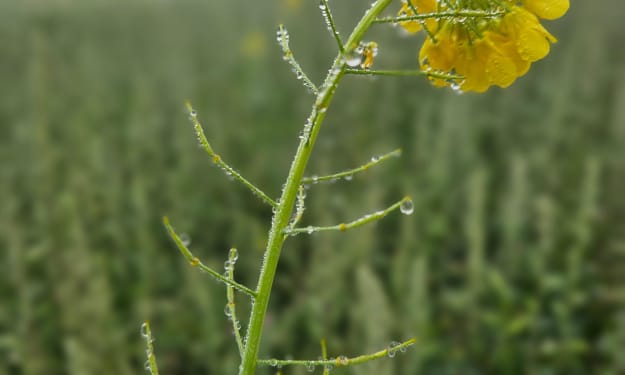The Most Dangerous places on Earth
Adventure or Desolation?

Do you consider yourself an intrepid traveler, always seeking new and exciting destinations to explore? While the allure of adventure is undeniable, there are some places on Earth where even the most daring explorers should tread with extreme caution, if at all. From death-defying roads to lethal lakes and treacherous islands, our planet hides some truly perilous locations. In this article, we'll take you on a thrilling journey to some of the world's most dangerous places, where nature's power and human history collide in ways that are both fascinating and terrifying. So, buckle up, because this is not your typical travel guide.
Death Road: Bolivian Terror
Imagine a road where a single misstep could send you plummeting into a 2,000-foot abyss, and you have Yungas Road in Bolivia, aptly nicknamed "Death Road." This treacherous track winds along sheer cliff faces, with sections only 10 feet wide and no guardrails. It was responsible for hundreds of deaths in the 1990s. Although a safer road was built in 2006, daredevils still challenge fate on this infamous path. Are you brave enough to take the risk, or is this one adventure best left to the truly fearless?
The Naica Crystal Cave: Beauty and Danger
Hidden deep beneath a mountain in Mexico lies the Naica Crystal Cave, a place of stunning beauty and deadly peril. Enormous selenite crystals, some measuring up to 40 feet and weighing 55 tons, create a breathtaking spectacle. However, the cave sits above an underground magma chamber, leading to scorching temperatures of up to 113 degrees Fahrenheit and extreme humidity. Scientists who visit must wear special cooling suits, enduring these conditions for a maximum of one hour. Sometimes, admiring nature's wonders from a distance is the safest choice.
Snake Island: No Place for the Unwary
Off the coast of Brazil lies Snake Island, officially named Ilha da Queimada Grande. Don't let its tropical beauty fool you; this place is teeming with around 4,000 deadly Golden Lancehead pit vipers. One bite from these snakes, known as one of the deadliest in Latin America, can cause flesh to melt within an hour. The island's history, separated from the mainland by rising sea levels, allowed these snakes to thrive without predators. Only essential researchers are allowed on the island by the Brazilian Navy. If you're not a scientist, it's best to stay far away from this slithering adversary.
Death Valley: A Scorching Desert
Death Valley in California boasts the hottest air temperature ever recorded on Earth—134 degrees Fahrenheit. This desert basin is notorious for its extreme heat, leading to heatstroke and dehydration. The landscape, filled with dangerous animals such as rattlesnakes, scorpions, black widow spiders, and mountain lions, is as unforgiving as it is stunning. In 2017, a tourist suffered third-degree burns from walking barefoot on the ground, which can reach temperatures as high as 201 degrees Fahrenheit. Fried eggs on the floor? No thanks, bring a packed lunch instead.
Oymyakon: The Coldest Inhabited Place
From extreme heat to extreme cold, we journey to Oymyakon in Eastern Russia, the coldest inhabited place on Earth. With temperatures plummeting to a bone-chilling -90 degrees Fahrenheit in winter, survival becomes a constant struggle. Local homes lack plumbed-in toilets due to frozen pipes, and the frozen soil makes growing crops almost impossible. If you visit, prepare to spend a small fortune on thick fur coats just to venture outside. Even with these coats, the air is so cold that it'll freeze your eyelashes and saliva within minutes. Oymyakon proves that sometimes the price of survival is steep.
Mariana Trench: Uncharted Depths
The Mariana Trench, located in the South Pacific Ocean, is the deepest point on Earth. It descends seven miles into the Earth's crust, a vast, unexplored abyss where sunlight can't penetrate. The water is pitch black, and the pressure at the bottom is an astonishing eight tons per square inch, enough to crush a human instantly. Fewer than 20 people have ever visited this unfathomable trench, and we're still learning about the mysteries that lurk in its darkness.
Skeleton Coast: Nature's Graveyard
The Skeleton Coast, part of the Namib Desert in Namibia, is a desolate, unforgiving landscape where drinkable water is scarce. Predators such as desert lions, hyenas, cheetahs, and jackals roam the dunes, with the bleached bones of their prey serving as grim reminders of this harsh environment. The coastline is strewn with shipwrecks, a result of dangerous currents, submerged rocks, thick fog, and roaring winds. If you find yourself on this lethal coastline, survival will be a constant struggle against both nature and the haunting remnants of maritime disaster.
Deathly Lakes: A Lethal Dip
Lake Karachay in Russia, once the most polluted place on Earth, emits radiation so intense that spending an hour on its banks would be lethal. Radioactive waste dumped into the lake by the Soviet Union has contaminated the area, leading to an increase in cancer rates in the surrounding region. Lake Natron in Tanzania is equally deadly, with a pH comparable to ammonia. This alkaline lake can burn any animal that isn't adapted to its caustic conditions, and its petrifying effect on animal remains creates a macabre display. Not exactly the picturesque lakeside picnic you were hoping for.
The Devil's Pool: A Risky Photo Op
If you're willing to gamble your life for the perfect holiday photo, the Devil's Pool on the edge of Victoria Falls in Zambia might be just the place. This natural pool sits precariously close to a 354-foot drop into raging waters below. It's safe to visit between mid-August and December, but during the wet season, rising water levels and strong currents could easily sweep you over the edge. Hippos and crocodiles inhabit the nearby Zambesi River, adding to the danger. Is a high-stakes photo worth the risk?
Danakil Depression: Surreal Danger
The Danakil Depression in Ethiopia is a surreal landscape that seems out of this world. Volcanic activity, tectonic plate movement, and scalding hot springs create an environment filled with deadly perils. Earthquakes, poisonous gases, and molten magma are just some of the dangers in this desolate region. The Danakil Depression, while captivating in its strangeness, is a place where beauty and danger coexist in a delicate balance.
Islands of Doom: Radioactive Legacy
Runit Island in the Marshall Islands houses a concrete dome containing radioactive debris from nuclear testing by the United States. Although a makeshift solution, the dome is already showing signs of wear and tear, potentially contaminating the surrounding environment. Vozrozhdeniya Island near the Aral Sea was a secret Soviet lab for testing deadly biological weapons, and the abandoned facilities now threaten to release super-resistant strains of infectious diseases. These islands are grim reminders of humanity's reckless actions.
The Elephant's Foot: Chernobyl's Lethal Legacy
At the heart of the Chernobyl disaster lies the Elephant's Foot, a mass of corium formed from nuclear fuel and melted metal. This highly radioactive material is encased in a protective steel structure to prevent further contamination. A few seconds in front of the Elephant's Foot would cause nausea and dizziness, minutes would lead to cell death, and within five minutes, death would be inevitable. The Chernobyl Exclusion Zone, although open for carefully regulated tourism, serves as a haunting reminder of the catastrophic consequences of a nuclear disaster.
Conclusion
While our planet is a magnificent and diverse place, it also holds hidden dangers that should never be underestimated. From the extreme temperatures of Death Valley to the deadly depths of the Mariana Trench, these places serve as cautionary reminders of the risks and challenges that nature and human actions can pose. Adventurers and explorers must always exercise caution, respect the environment, and prioritize safety above all else. Whether you seek the thrill of exploration or prefer the comfort of armchair travel, understanding the dangers of these places reminds us that, sometimes, the most prudent journey is the one not taken.
About the Creator
Lindsay Franklin
Exploring life's mysteries one word at a time. Let's dive into the unknown together and discover the magic within our stories. wandering through realms of knowledge and creativity. Let's journey through endless exploration and inspiration.
Enjoyed the story? Support the Creator.
Subscribe for free to receive all their stories in your feed. You could also pledge your support or give them a one-off tip, letting them know you appreciate their work.






Comments
There are no comments for this story
Be the first to respond and start the conversation.